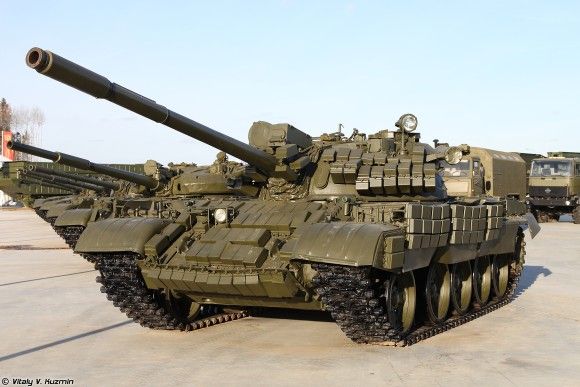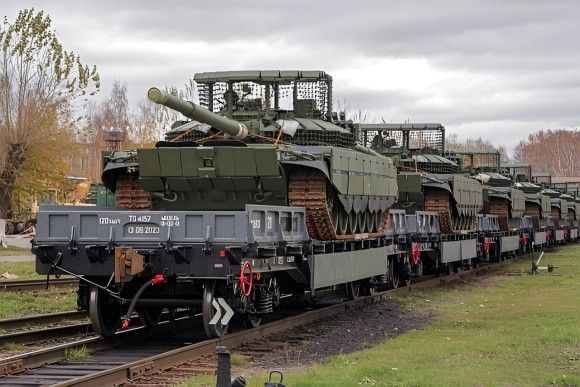
Author of the book. Not Sputnik (@Sputnik_Not)/Twitter
Yohann Michel and Michael Gjerstad of the International Institute for Strategic Studies published a report on Russian losses in armor since the start of the full-scale invasion of Ukraine. Researchers put the number at 9,000. Destroyed tanks and other armored vehicles.
Exactly two years have passed since the Russians launched a full-scale invasion of Ukraine, a stark contrast to the assumptions of planners in Moscow. The “second army of the world” (after the US army) should have vast resources of military equipment, for example, to be able to counter NATO. As reality showed, obsolete T-62 tanks began to be withdrawn from the reserve very quickly, and over time even T-54 and T-55 tanks appeared in large numbers in Russian second and third-line units in Ukraine. You can also see an increasing number of BTR-60 and 70 wheeled armored personnel carriers and BTR-50 tracked carriers that were withdrawn years ago. How many vehicles have the Russians lost in Ukraine so far?
According to a report published by analysts of the Institute of International Strategic Studies, losses of more than PLN 3,000 were incurred last year alone. armored vehicles, and as of February 2022, the total number is more than 8.8 thousand. Thus, the Russians lost more tanks, infantry fighting vehicles and armored personnel carriers than Poland, Germany, Great Britain, France, Spain and Portugal combined. The publication was issued on February 13, and the data used to create the report dates back to late November last year. Therefore, it must be assumed that the Russians exceeded the 9,000 limit. Engines were lost due to suicide attacks in the Avdivka area and other operations on the front, which created huge losses in equipment and manpower.

Destroyed BMP-3 vehicle
Author of the book. Ministry of Defense of Ukraine/Twitter
The authors emphasize that it is very difficult to estimate the extent of irreparable losses, the number of vehicles withdrawn from the front and the number of stocks returned to service. Unlike the losses suffered by the Russian Navy or Air Force, the number of vehicles engaged in combat was incomparable, and equipment was constantly in motion between the front, rear, and repair plants. Destroyed ships or downed aircraft are highly visible in the infosphere, and in many cases repair is impossible. In addition, it is difficult to determine approximate Russian losses due to propaganda activities carried out by the Russian and Ukrainian sides.
How many tanks, infantry fighting vehicles and armored personnel carriers were the Russians able to return to the army last year? The authors note that we are talking about at least 1.2-1.3 thousand. tanks and more than 2.4 thousand armored personnel carriers and infantry fighting vehicles. In addition, it is necessary to add newly produced vehicles such as BMP-3 or T-90M, although it is very difficult to determine the amount of supplies here. Among the vehicles restored to service, several vehicles recall the T-62, T-55, BMP-1, BTR-70 and MT-LB, which were withdrawn several years ago and stored outside for decades deep in the Warsaw Pact. Many of them don't even go through the process of restoring to the variant they entered storage with. For example, T-55 tanks were seen at the front, equipped with common elements of the T-55AM and AMW versions, but without the additional armor provided for these modernizations. On the other hand, there are vehicles like the T-62, some of which are being upgraded to a new standard called the 2022 and 2023 models, but in a different form. Many components are missing from warehouses and factories may not be able to continue production of replacements.

T-55AMW.
Author of the book. Photo by Vitaly V. Kuzmin
Analysts from the International Institute for Strategic Studies were of great help in preparing the report thanks to satellite photos showing Russian military equipment depots. They were described by our colleagues from the editorial office of Space24, among others, Russian artillery in the form of self-propelled howitzers. 2S7 Soldier And 2S5 Hyacynth—S. Photos show how many vehicles are disappearing from yards. This means reconditioning for service and donating at least some vehicles for spare parts. Currently, Russia must have 10 central tank reserve sites, at least 37 mixed military equipment and weapons depots, as well as at least 12 artillery storage sites. However, it should be remembered that many of the cars stored there are rusty shells that have been stolen over the last three decades. As the report's authors point out, the Russians will be able to wage war in Ukraine for the next 2-3 years (or longer) with their current holdings.

Author of the book. UralWagonProfession

. “Hardcore internet junkie. Award-winning bacon ninja. Social media trailblazer. Subtly charming pop culture advocate. Falls down a lot.”
